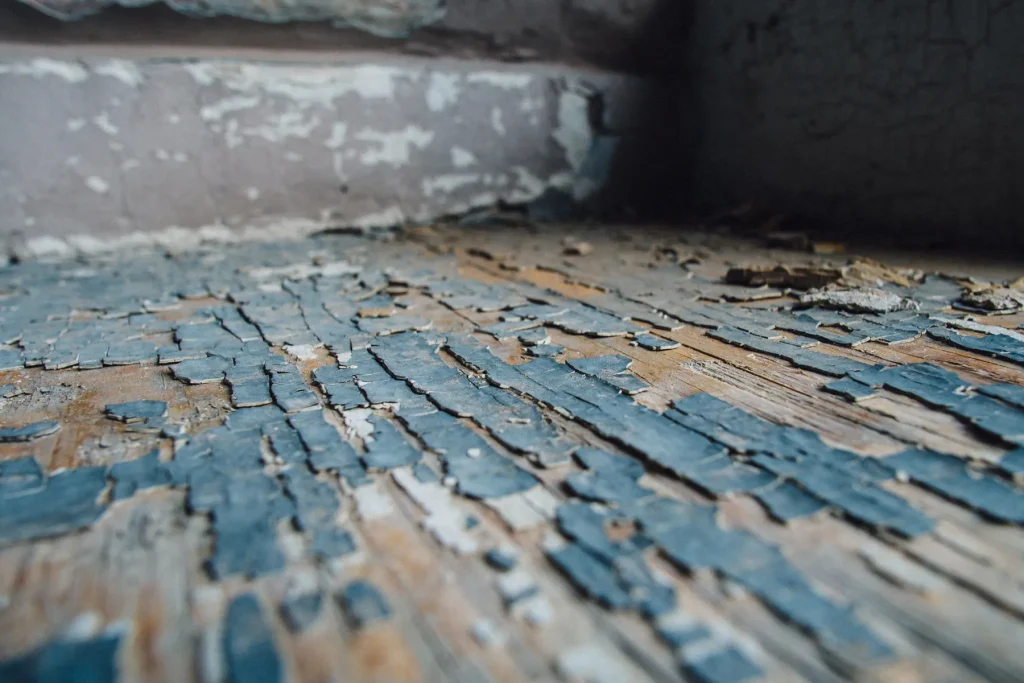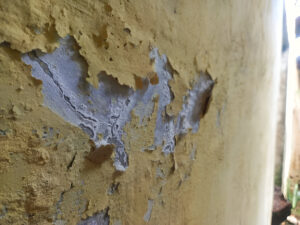In homes all over the US, folks are giving their places a makeover. But here’s the thing: lots of houses built before 1980 have this not-so-cool secret—they’re hiding lead paint on their walls and ceilings.
It might seem like harmless flaky paint, but that lead stuff is seriously bad for your health. So, if you’re thinking your place might have some of this lead paint action going on, it’s time to figure it out.
But how do you even tell if you’ve got lead paint, and what does it actually look like? Don’t worry, we’re here to break it down for you in plain and simple terms.
In this article, we’ll talk about spotting old lead paint and what you can do about it.
What is Lead Paint?
“Lead paint” or “lead-based paint” are terms we use to talk about any paint in our homes that has lead in it. Back in the day, before the 1980s, they used to add lead to paints.
Why? Well, it helped the paint dry faster, stay tough, and resist moisture. Plus, it was a cheap and efficient way to make paint.
But in the United States, they put the brakes on using lead in household paints in 1978.
Why? Because using lead in paint is seriously bad for your health. Now, paint manufacturers use other safer stuff like non-leaded pigments, anti-corrosion stuff, and driers.
You won’t find lead-based paint sitting on the shelves of your local hardware or paint store these days. It’s all about safety now.
What Are the Health-Risks of Lead Paint?
Lead-based paint got the boot in the United States for a good reason. You see, lead is a seriously toxic metal. If you’ve got it lurking in your home, it’s important to do something about it to keep your family safe.
Breathing in lead dust particles is no joke – it can cause some really serious and even life-threatening health issues. Here are some of the symptoms to watch out for:
- High blood pressure
- Headaches
- Problems with how kids grow and develop
- Feeling sick to your stomach and belly pain
- Achy joints and muscles
- Trouble remembering things and staying focused
- Mood swings
- Fertility problems
So, if you suspect lead is a problem in your home, it’s definitely something to take seriously.
How to Know If You’ve Lead In Your Homes?
Lead-based household paint was once a staple in homes across the United States, so much so that if your house was constructed prior to the federal ban imposed in 1978, chances are high that you’ve got traces of this historical paint lurking within your abode. In fact, astonishingly, the CDC suggests that around 24 million American homes still grapple with the lingering specter of serious lead-based paint hazards.
Clues That Suggest Your Older Paint Might Contain Lead
Well there’s practically no way to simply have a look at the paint and tell if it’s got lead traces in it or not. As with most households, you will definitely have to dig a bit deeper and make sure to get the paint tested.
Only then, you can be absolutely sure. That being said, there are a few common indicators which can help you determine whether there’s lead paint present and if you should get it tested or not.
Aligatoring is a common indicator where naturally, the paint starts to crack and wrinkle creating a pattern like the ones you see on reptiles such as crocodiles and alligators. It’s a sign your paint contains lead.
Another sign that you might be dealing with lead paint is if it produces a chalky residue when it rubs off.
If you happen to spot any of these paint problems in your home, it’s a good idea to get them checked out ASAP. But here’s the thing, sometimes it can be a bit tricky to spot these issues.
Feel free to have a look around in the closets, around baseboards, behind appliances, and in other similar areas where people usually don’t check the paint over.
Also Read: Difference Between Lead Inspection & Lead Risk Assessment
Concerned If There Might Be Lead Paint in Your Home?
Whether your home is among the millions in the United States with surfaces containing lead paint or you’ve simply decided to take the step of lead paint removal out of concern for your family’s health & safety, it’s time to hire Manhattan Lead Inspection to help you with the process.
We use the latest XRF technology to identify traces of lead present within your walls & ceilings. At the same time, our experts take appropriate samples of your paint & professionally test it.
Dial (212) 226-1614 and schedule your lead inspection today!




